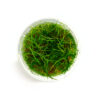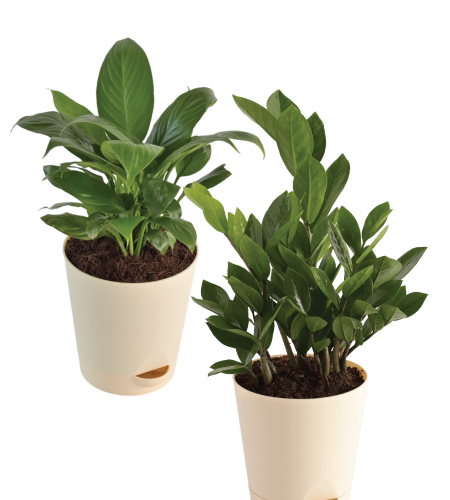Elocharis parvula “Japanese”(Mini hair grass) is another name for “Japanese Dwarf Hair grass.” It is most likely the shortest hair grass on the market today. It is a popular foreground plant that grows very short and does not require trimming on a regular basis. Although this plant is well-known among aquascape enthusiasts as a carpet species, there is more to it than meets the eye. Hairgrass has a lot of potential benefits to offer an aquarium biosystem, and it’s not too difficult to maintain, but it’s not a species for beginners.
Dwarf hairgrass is one of the best carpeting plants for beginners and advanced aquarists alike. It can form lush green carpets in the tank, is extremely beneficial to your fish and shrimp, and helps to maintain a balanced and healthy aquarium. It is a versatile and hardy plant that is well-known for its ability to form thick carpets in aquariums. It has a short stature, needle-like green leaves, rapid growth, and durability.
Eleocharis acicularis is an Eleocharis species that is part of the Cyperaceae family of grass-like monocotyledonous flowering plants known as sedges.
The name acicularis comes from Latin and means “needle-shaped.”
Elocharis parvula “Japanese”(Mini hair grass) is a widespread plant with a worldwide distribution. It grows naturally in almost every part of the world. Except for Africa, it grows in temperate, subtropical, and tropical zones around the world. Dwarf hairgrass grows on the banks or along the edges of slow-moving rivers, lakes, ponds, marshes, and swamps.
Dwarf hairgrass is a rosettes-growing grass-like plant. It has a rich green hue that deepens in bright light. The plant, as the name implies, has a short stature and, depending on the species, a height of up to 5 – 15 cm (2 – 6 inches) with long hair-like blades that are upright and stringy. Dwarf hairgrass can withstand a wide range of temperatures and grows at a medium rate in conditions of abundant lighting, nutrients, and CO2. The presence of these elements ensures that it forms attractive and decorative carpets in aquariums.
Eleocharis acicularis is occasionally mistaken for Eleocharis parvula or Eleocharis Belem (sp. mini). Eleocharis acicularis is frequently confused with Eleocharis parvula, and vice versa. It is important to note that they are not the same.
How should you approach Elocharis parvula “Japanese”(Mini hair grass) planting?
There are a few crucial steps you must take in order to give this plant a proper start. I’ve honed the process with a few nuances discovered through my own experience and by monitoring the fish tanks of my clients. Here’s a detailed step-by-step guide to planting dwarf hairgrass:
1) Separate the hairgrass into patches of 4 to 6 grass blades. Using larger patches will significantly slow down the spread rate of the grass. When you use very thin packs, the roots and runners don’t compete with each other, and your hairgrass forms a cover much faster.
2)Cut the roots. Trimming the roots will direct the plant’s energy toward faster root recovery. Because this type of hairgrass spreads through runners, the carpet spreads more quickly.
3) Using plant tweezers, grasp the hairgrass by the roots. Planting tweezers are almost always required when planting virtually any type of hairgrass in an aquarium. Fingers will not suffice, and you will have significant difficulty because they lack finesse. Make certain that yours is made of stainless steel. I can recommend these or similar ones because they have served me well thus far.
4)Separate each patch by 1/2 or 1 inch. One inch of space is enough to encourage the runners to grow without crowding the patches.
5) Gently press the patches into the substrate. Hold the tweezers at a 45-degree angle and gently push them against the substrate.
6) Shake the tweezers and pull them out when the patch is 1/3 deep. Shaking is recommended so that the substrate can mould itself around the grass roots. This way, you can safely remove the tweezers without uprooting the delicate grass blades.









Reviews
There are no reviews yet.